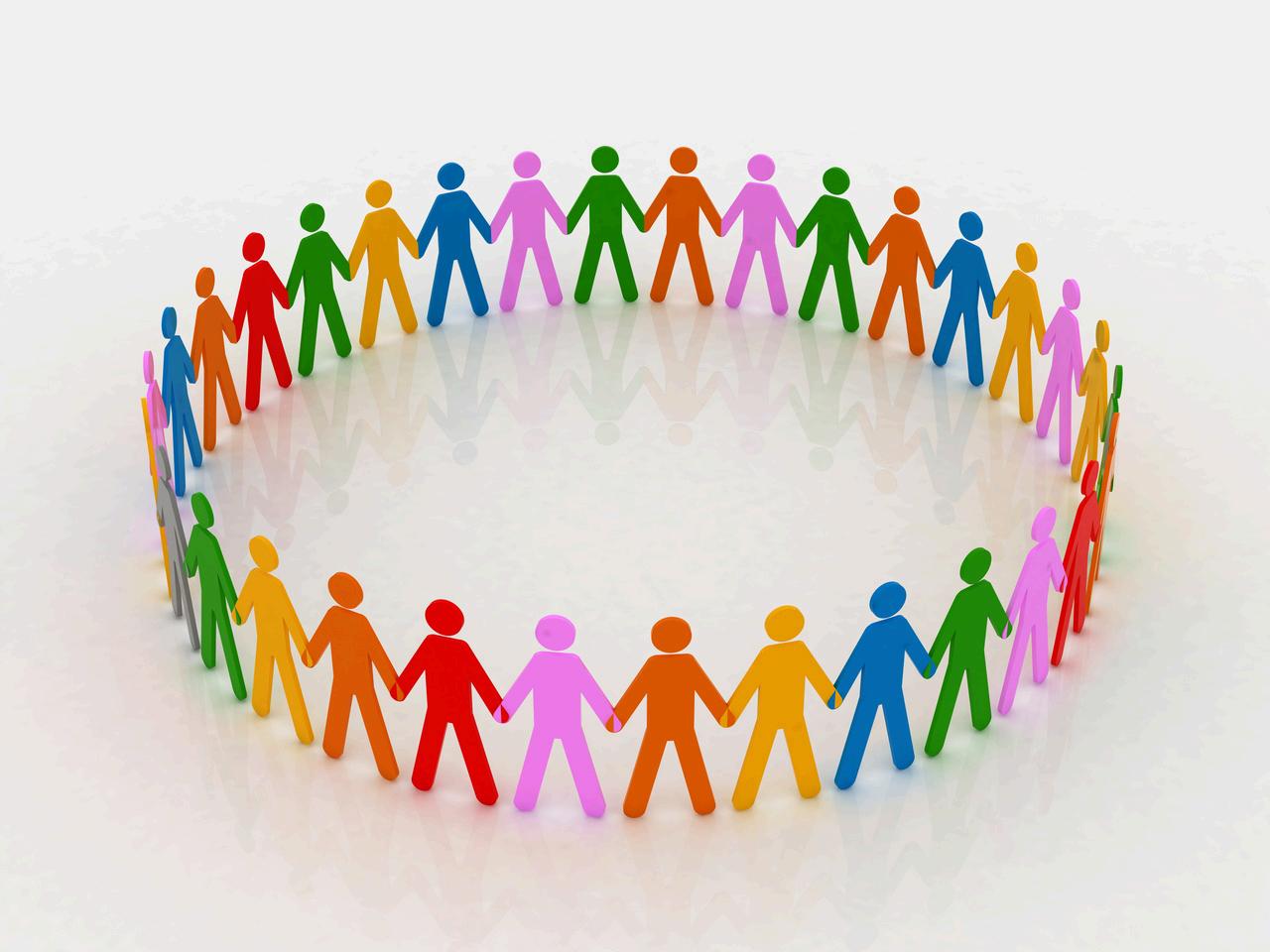


















JSWING216












You may be wondering why we’v decided to launch a magazine. That’s fair question! If you’re familiar with us you know that we host one of the nation’s top podcasts on non-monogamy and get millions of views monthly on social platforms like TikTok, Instagram, and Clapper.
So why add something else to our plate and start a digital magazine? The truth is, ALT Life Magazine isn’t about us. It’s about you and the community of people who have a message to share and need a platform to do it.
This magazine is for people who may not be able to put themselves out there publicly on social media due to fear of judgment and backlash. Our journey since 2021 into becoming social media influencers for the alternative lifestyle community, the one thing that’s remained consistent is the community and the people that encompass it.

are some of e people on the planet. The world needs to hear your stories, to get to know you, to fall in love with you like we have.
Our hope is that if they can see you for who you truly are, then perhaps the hate, the stigma, and the discrimination will come to an end.
We believe one of the best ways to do that is to do what we’ve pledged to do from the beginning; to shine a little light on the community.
So, we’d like to encourage all of you to contribute, to share your stories, to be heard.
We want you to be able to show the world how truly amazing and valuable this community is. We hope that one day we can all come out of the darkness and not have to live in fear.


the server
r a while then I am sure you have en one of those absolutely filthy lfies that make you wonder what actly it is that he does for a living. you're anything like me, I also ondered what he uses to wash his undry because if it can stand up to his messes then surely it'll take care of the messes I make, right? When Levi joined our community he quickly stood out. His sense of humor is in a league of its own. If laughter is a love language, I would be willing to bet that it is his.



While he explored and found his comfort on server with his amazing wife , MysticHaze, he quickly became an encourager. He truly listened to people. He offered advice where he could. He would join voice chat and leave everyone in stitches. When the opportunity came to add to our ambassador team he was a natural fit. He didn’t hesitate to throw his hat in and to engage our community. Even when life has gone through busy seasons, he has still been involved in the backend planning of server events. He is witty and punny, so he is a wonderful addition to catchy server themes. Thank you Levi for your service on our staff! We are lucky to have you.


One morning, after a fun overnight lifestyle party, my friend and I were sitting on the patio, basking in the sun, enjoying the Park City mountain views. We were just talking and maybe cuddling, as lifestyle friends do. Her partner came out with a cup of coffee for each of us and then asked what we would like in our omelets. We looked at each other with big smiles on our faces, feeling so grateful for good friends and the men waiting on us. Funny enough, we remember it differently in who delivered the next line (I give her credit, she gives it to me) but it was something like, “Wow, I think we’ve made some really good life choices to bring us to a moment like this.”
We laughed then and it has become an ongoing thing for us. We’ve had so many moments since that one where we say out loud, “Good life choices!” and we know what we mean. Friendship moments, funny moments, and mindblowing sexy moments. This particular friend and I started a group together called The Sacred Sluts: A Group of Spiritually-Minded Women Practicing Non-Monogamy. We’ve had some amazing moments with our group where we call this out frequently.
 BY: LAUREN, “SWINGING LIFESTYLE COACH”
BY: LAUREN, “SWINGING LIFESTYLE COACH”
Hubs and I had met a single guy recently that we both clicked with. YES, this does happen pretty often for us, actually (poor single guys and their bad rap). Our first lifestyle experience with him ended up being a group situation and he was awesome. It was an incredible night and we stayed in touch. Another night there was talk about meeting up with him and it would just be the three of us. I have to be in a particular mood for a MFM, and we had already had quite an active lifestyle weekend so I was on the fence. This was going to be one of the last opportunities to see him, however (due to a move), so I decided to rally. What a good life decision that was.

While hubs went down to the lobby to bring him up to our room, I changed into lingerie. I’m not the best in the role of ‘seductress,’ but lingerie always seems to get the party started, and indeed it did. We had an incredible play session. When there was a lull, the two of them decided that they would give me a massage. This single guy, besides being a very cool person, is HOT. He’s a trainer and has an incredible body. He also happens to DO massage therapy. While I laid there getting an incredible four-hand massage from these two HOT men, I just kept murmuring every once in a while, “I have to tell Sarah about this.” My husband knows who Sarah is, but after a while, they both were like, “What?” I told them about our ‘good life choices’ moments. They laughed.
What I think is interesting about this ‘good life choices’ phrase is two-fold. For one thing, I really had to pat myself on the back in this situation because I was recognizing how good I’ve become at receiving. What!? Good at receiving? Yes it’s a thing. Allowing love, or in this case pure pleasure. Being in the moment of just receiving and not getting into my head about if I was taking too much time or if I was too much the center of attention These two guys were here this evening FOR this — to please me. Honestly, the most generous thing I could do was allow it.


This is one of the lessons that comes along with a life that celebrates pleasure for pleasure’s sake; the giving and the receiving. There is receiving in giving and giving in receiving. Usually, we are better at one than the other, or I should say more comfortable with one or the other. Of course, much of the night there was mutual pleasure happening giving and receiving happening all over the place, but certainly during this most luscious sensual massage session, I just took it in. The magic, the pleasure, the feeling of ‘I’ve made some really good life choices.’

The second thing is that I don’t think people outside of the lifestyle can comprehend how choosing to be nonmonogamous can be such a good life decision. From the outside it has all kinds of bad written on it, because of the stigma. If not bad morally, which some people will just always think; then, complicated, risky, and not worth it – even if they are morally not opposed.
It’s hard to imagine what would be worth the emotional complication that does come along with non-monogamy. Like anything, though, one gets better at the emotional complication as we go along. That’s because, generally, we grow as people. That’s another reason it seems like a good life decision to choose nonmonogamy because you know the growth that you’ve experienced and you know how worthwhile it really is.

During many extraordinary lifestyle moments (read: orgies), someone will pop their head up and say, “If only everyone on the planet could experience this.” We understand that it’s not everyone’s jam. We just hope that whatever everyone else’s jam is, that they get this level of connection and pleasure out of it because it is pretty life-changing. This level of giving and receiving is miraculous.

All magic, miracles, and mind-blowing experiences aside, this is primarily about making good life choices. Non-monogamy is absolutely not for everyone. Celebrating amazing life-moments is. So, nonmonogamous or vanilla as they come, I invite you to find your ‘good life choices’ moments and encourage you to celebrate them maybe even drop me a line and tell me about them.

 BY: HOTDILF
BY: HOTDILF
Swinging, as a lifestyle choice, entails a level of openness, trust, and communication that goes beyond conventional relationships. In the digital age, swinging websites serve as hubs for like-minded individuals to connect, but the importance of reading swinger bios on these platforms cannot be overstated.
Swinger bios provide essential information about individuals or couples. These profiles often include details about preferences, boundaries, and desires, offering a glimpse into what they are seeking from potential partners. Everyone should be taking time to read these bios. That way you can see if there is a mutual interest in connecting and going further than the screen time.

These bios serve as a means of establishing trust and transparency within the swinging community. In a lifestyle built on trust and respect, being honest is crucial in your success. Reading bios allows individuals to gauge the authenticity of the profiles they encounter, helping to weed out fake accounts or individuals with dishonest intentions. By engaging with genuine profiles, lifestylers can cultivate a safer and more trustworthy environment for themselves and others.
Your success is predicated on how well you understand the wants and needs of anyone you might be interested in. On a personal level, if you can cite back to me something that is in our bio’s then you have already gained a point. Reading the bio of what our interests and boundaries are moves anyone toward the top of the list. Why is that? The reason is simple: if you can take the time to read something, it shows you’re going to keep our interests in mind. Even beyond that, it shows you have a genuine interest in us as a couple or even individually.
Happy searching and alwaysStay
 BY JESS LYNN, NON-MONOGAMOUS RELATIONSHIP COACH IG: NONMONOGAMOUS NEWBIES
BY JESS LYNN, NON-MONOGAMOUS RELATIONSHIP COACH IG: NONMONOGAMOUS NEWBIES
When you think about the word “fair,” what comes up for you? Does “fair” mean the same as “equal”? If so, what happens when “equal” isn’t possible or potentially even desirable?
While it would seem that the definition of a word like “fair” might be something a third-grader could understand, there are a lot of ways that this word can get a little complex in a non-monogamous context. In many situations in non-monogamy, for example, in navigating how much time to spend with different partners, who to ask to accompany you to a particular event, or even when and how you continue to connect with additional people. Sometimes, we might feel compelled to make things equal between partners, when equity might be a better way to look at things.


Le

lly ex id hanging with a friend and it s dinnertime. Your parents offer to buy you a pizza as a treat but tell you that you must share it fairly. Easy, right? If the pie has 8 slices, then you just share it equally – four slices for you and four for your friend.
But let’s say that you had a really big lunch and aren’t feeling very hungry, while your friend is starving. When the pizza comes, though, it looks and smells so good that you know you do want to try it, but you simply aren’t feeling as hungry as your friend. In this situation, does it still make sense for fair to mean equal, when one person’s needs and desires far outweigh the others? Or, would it make more sense to split the slices according to those needs, so that everyone’s needs are met, thereby achieving equity. Wouldn’t that make more sense?
Alright, I know that right now you might be thinking – “Jess, people are not pizza, it’s not this simple when it comes to humans and their emotions.” And you’re right, it’s not the same, AND I still think that there’s something useful here.


You can use this metaphor to think about the word “fairness” in different ways –perhaps you may feel called to just take stock of your exact meaning when using that word. Perhaps instead, you might wish to remove that word from your vocabulary, using more descriptive language around your needs or desires. Truthfully, the more we practice being honest and direct about our feelings anyway, the more likely we are to achieve relationship satisfaction AND feel clued into one another, anyway.
So, what might this look like in non-monogamy-land? I think the most common example where we might get in our feels about “fairness” is concerning time. When we venture into non-monogamy, we often find ourselves having to think about splitting time up in different ways that we may be used to in monogamy. And, as humans, we are hard-wired for community and time with others, so it’s normal for strong feelings to come up when we are thinking about how much time we are getting with a particular connection, when the next time we will see them is, or even what kind of time others might be getting with this connection that we may or may not be privy to.
The thing about time is, there are different types of it – there’s quality time (time that we intentionally set aside to be with those we care about), parallel time (time that we spend in the presence or near-presence of others that isn’t about doing something together intentionally) and what I like to call “selfie time” (the time we spend alone).

Each of us has different desires and needs around time that we may or may not be aware of before venturing into non-monogamy. Some folks need a great deal of alone time every week, while others may prefer to spend more time in the company of others. Some of us are well-versed in expressing our emotions and needs to others via technology, and some of us do better in person. And all of this means that when it comes to the concept of “fairness” around time – it’s challenging (and usually counterproductive) to use the “fair is equal” barometer.
For example, in my own life as a polyamorous person with two partners (though we can translate this thinking to any number of other non-monogamous situations), there was a time when I was almost obsessed with making our time together as exactly equal as possible. I figured, there were 7 days in a week and I had two partners, so that meant I would spend 3.5 days with each of them each week. While well-intentioned, this quickly got me into trouble because 1) I wasn’t thinking about time with anyone else or alone time, and 2) I wasn’t actually listening to my partners’ needs around time, but instead just trying to force equalness as fairness.
As you can probably imagine, this did not last long, because I became so overwhelmed at trying to make everything perfect, my partners didn’t know what was going on with me, and ultimately everyone was just slightly miserable. My actions and assumptions, while well-intentioned, created a situation in which no one was winning.

By taking a beat and talking with my partners, I realized that while I was obsessing about everything being equal, they weren’t quite so worried. They both felt loved by me and understood that we all needed different amounts of alone time and quality time to feel connected and that there was more than one way to achieve that.


So, if we let the concept of fairness be equal, it’s easy to get into some challenging habits. We might end up eeling it’s required of us to only go out on dates or meet with play partners when our other partners already have plans – to make things fair. Or, we might feel guilty wanting to add another potential partner to our life if one of our partners only doesn’t have an additional connection.
All of these feelings and thought processes are normal –they’re human. When faced with a challenging situation (as non-monogamy often can be, especially in the beginning), it’s normal for us to want to do everything possible to keep the comfort. This is completely understandable AND often unrealistic. And this is how good intentions might turn from “trying to be fair (equal)” to “making demands that don’t make sense just for the sake of comfort.” Life is complicated, scheduling is hard, people have needs that change and evolve, and we are all humans on a journey of figuring out what is ultimately aligned for us in terms of our relationship(s).
If you’ve experienced any of these types of situations – felt yourself get stuck when everything can’t be equal, wondered how you were going to make sure everyone felt you were being fair in your actions, or wished there was an easier way to go about all of this – here’s what I’d suggest:
Take some time to think about what it is that you want and need out of your connections with other people.
What is most important to you? What is a nice-to-have? What is non-negotiable?
Are there ways that you can recognize for yourself that you may not always want or need the same thing that someone else has?
What can you do to be more mindful about your own needs and desires, so that you can also start being more mindful of others?
Taking some time to do this kind of reflection (and maybe even encourage your partner(s) to do the same) can help you narrow in on what it would look like to turn your “fair” from “equal” to “equitable,” and to make decisions and agreements that meet everyone’s needs as best as you can. And along the way, you might even learn something new about yourself, which is what so much of non-monogamy is about!



If you told my younger self that one day I'd be walking along the poolside in Florida, wearing nothing but my birthday suit completely unbothered, I would’ve laughed in your face and taken a puff of whatever it is you were smoking. Changing after swim class, wrapped in a towel in the corner of the changeroom was hard enough; I could never have predicted adult me ever doing something like that.
But there I was on the last day of our Secrets holiday, starting off the day in a two-piece and eventually stripping down to nothing to receive the best tan I’ve ever had. As my lovely lady lumps toasted in the Florida sun, my mind reflected on not just the previous few days, but the past few months as my husband and I began exploring the lifestyle. Last year, we worried about moving the furthest we’ve been from our families and starting new careers. A year later, we were both sipping poolside drinks at a swingers resort more than a thousand miles from home, armed with more self-confidence than we’ve ever had.
Two months prior to hopping on a plane, we decided to “send it” and not just visit someplace warm, but to also hop out of our comfort zones and visit a lifestyle resort.
Right away, we knew it was vastly different than any of our local clubs because despite being a thousand miles away, we knew many others in attendance despite only meeting them online. Putting names to faces and connecting with them “in real life” just as naturally as we did on Discord, was exciting.
But my teenage self began to come out: one of my biggest worries about meeting people, with whom we’ve only interacted online, was disappointing them. Would I be as talkative, bubbly, and personable as I was on the server? Would anxiety get the best of me? Did I misrepresent myself by using too many filters or edit out one-toomany blemishes?

Just like my husband, who was riddled with anxiety on our way to the club for the first time, my fears were also for naught. In fact, as we joined the room crawl with some server friends, people recognized us and seemed genuinely excited to meet. We walked from room to room, meeting familiar faces, chatting with Swinger Society staff, and rubbing elbows with big names in the lifestyle, like Dan and Lacy, and Life of Spice. The friendly, positive and inclusive overall vibe quickly eased our nerves.

Throughout the weekend, we shared meals with new friends, danced the night away, and experienced wonderfully intimate moments in various stages of undress. No matter what we did (or didn’t) wear, we were never met with judgemental glares or equally uncomfortable, skin-crawling staredowns. As day turned into night, and poolside lounging turned into theme night partying School Daze on Friday, and Homecoming on Saturday — every encounter was still friendly, every encounter was light-hearted, and every touch was consensual. Although we had known our new friends in-person for just a few days, we felt comfortable discussing anything: from career paths to home ownership, from relationships and intimacy to sexual preferences — and how to “correctly” pronounce Louisville everything felt natural.

As our sexcation wound down, countless comments from more experienced couples rang true and backed up my research into the lifestyle. Throughout our journey so far, we’ve realized that although we’re meeting new people and experiencing new things, my husband and I feel more intimate and closer than ever before. Our attraction to one another isn’t diminished by playing with another person or couple; in fact, it has taken our closeness and passion to new heights and the already-strong foundation for our relationship feels even stronger. We both feel more grateful, more appreciative to acts of service, and revel in the honesty and communication of our fantasies and desires. Plus, we’ve picked up a few new tricks, too.
As we boarded the plane for our flight home, recalling the last few days with a sly smile, I was reminded of something that Secrets’ DJ announced on our last day: “Good luck going back to real life!” I laughed in agreement. After seeing so many people be open with their bodies and affection, untethered by the longestablished notion of what relationships should look like and armed with a sense of self-confidence I’ve never experienced before, going back to our vanilla life definitely was going to be challenging.
But hey, at least I didn’t have any tan lines!



, intuition and rejected conformity to the status quo. It began with questioning our surroundings and why people around us continued monogamous traditions despite all the dating dissatisfaction they experienced. We didn’t understand why our feelings for others were being suppressed when honesty should be valued over deception. Our inquiry eventually led us to polyamory as our truth. And with this, we chose freedom as our way of life.



Millie's journey into polyamory began during her childhood at the age of ten while living on her tribe's Masai land in Kenya. They observed how the Indigenous people around them formed relationships, recognizing their methods as more harmonious and fulfilling compared to the divisive legacy left by British colonization. Millie noted Kenya’s modern issues of divorces, infidelity, and orphans who no longer had the village or co-parents from polygamous marriages as a safety net. It didn’t make sense to continue this way of life, and began seeing the justifications for this modern way of life were based on many lies.

Years later, after moving to Canada, Millie introduced Nick to polyamory when they started dating in 2010. For Nick, embracing polyamory was like finding a missing piece of the puzzle. He had never felt possessive of his previous girlfriends, which upset them because they had been conditioned by monogamous culture to view jealousy as a sign of love. Nick felt he had a lot of love to give and had always felt constrained in expressing it, and had internalized the idea there was something amiss about him feeling these feelings.

Millie's idea is to live among their partners of various genders around the world, following the sun and avoiding winters and wet seasons. Meanwhile, Nick's plan is to reside in a triplex with three partners, where he can be a family man but also live in close vicinity to his other partners.
Millie is interested in indigenous kinks and sexuality as a way to connect more deeply with the earth and nature. Nick enjoys connecting with strong women and the occasional visit to a sex club.


Through our work with decolonizing love, it has been gratifying to empower people globally to live freely and love more authentically, moving beyond the colonial and patriarchal prescriptions of relationship norms. This shift allows for a more genuine expression of affection and connection. For most people, monogamy is not their truth but merely their social conditioning. It has been quite extraordinary to see our message resonate globally as people awaken to what’s been amiss and what was taken from them hundreds of years ago. We have coached clients on polyamory from around the world, including Korea, India, Morocco, Germany, and the Americas. Our message resonates with many because of our decolonizing lens and the readiness of many to live freer in their bodies and form broader communities.


We coach people in the later years of their life where they are finally feeling brave enough to date non-monogamously after decades of trying traditional marriages and getting divorced. We've also spoken with queer Millennials and Gen Zs who use the internet to learn how to break free and create relationships where everyone is truly sovereign. And so on.
Our polyamory journey has been radical because, as you pull away one veil, you realize how much about relating has been altered by colonization. Factors such as hierarchical thinking, the lack of community, the isolation many people face, and the formation of the nuclear family are all legacies of various colonizations such as the Roman, HanChinese and West-European colonization of various regions of the world. Decolonization is about bringing us back into harmony with our bodies and restoring the close connections from which we were once pulled away, having been told to accept minimal intimacy in our lives.


It is truly remarkable how just by living freely, you can inspire others to do the same. And is there anything more sacred than freedom, love, and community?


 BY AYNE
BY AYNE
the realm of BDSM, where exploration knows few bounds, erotic phyxiation (aka breath play) emerges as a practice that ertwines intensity, intimacy, and risk. It's a facet of BDSM that elicits both fascination and caution. At its core, breath play involves intentionally restricting someone's breathing for arousal, sensation, or control. This can take various forms, from gentle breath restriction to more intense techniques like choking or suffocation fantasies. However, amidst the allure of heightened sensation, a paramount emphasis must be placed on safety, communication, and informed consent.
Breath play, when executed with care and mutual consent, can offer a profound sensory experience for both participants. For some, the act of controlling or surrendering one's breath can evoke a sense of vulnerability and trust, intensifying the power dynamics inherent in BDSM dynamics. It can heighten sensations of pleasure, arousal, and submission, creating an intimate and exhilarating exchange between partners. The sensation of breath play can vary greatly depending on the techniques employed.
Choking: This involves applying pressure to the sides of the neck to restrict blood flow to the brain temporarily. It's essential to avoid direct pressure on the windpipe, instead focusing on the sides of the neck where major blood vessels are located. Some practitioners may use their hands, while others may prefer using implements like a collar, scarf, or tie. It's important to never apply pressure directly to the trachea or windpipe, as this can lead to serious injury or death.
Suffocation Fantasies: This involves simulating suffocation or smothering sensations without cutting off airflow. For example, one partner may use a pillow or their body to cover the other's face, providing the sensation of being smothered without preventing breathing entirely.
Hand Over Mouth/Nose: One partner gently covers the other's mouth and nose with their hand, controlling the flow of air. This can be done with varying degrees of pressure and duration, always ensuring that the bottom partner can breathe if needed. Breath Holding: Partners may engage in consensual breath holding, where the bottom partner voluntarily holds their breath for a specified period. This can be combined with other forms of stimulation to enhance arousal.
Breath Control: Verbal commands by one partner to control the depth and pace of breathing of the bottom partner.
Some practitioners incorporate props such as plastic bags, gas masks, or latex hoods to restrict airflow temporarily. It's crucial to ensure that these props have safety features built-in to prevent accidental suffocation.
Breath Control Techniques: Partners may experiment with various breath control techniques, such as pursed lip breathing or alternate nostril breathing, to regulate airflow and enhance arousal.
Kinging or Queening: Smothering your partner with your genitals. Vulvas can be used to rub back and forth across the bottom partner's face during oral sex to limit breathing. Penises can be used in combination with nose pinching and oral sex for similar results.
Breath play can be incorporated into other BDSM activities, such as bondage or impact play, to intensify the overall experience.
Safety is paramount in any BDSM activity, and breath play is no exception. Due to the inherent risks involved such as hypoxia (oxygen deprivation), asphyxiation, nerve damage, and potential psychological trauma practitioners must approach breath play with a thorough understanding of anatomy, physiology, and risk mitigation strategies.

First and foremost, communication and consent are non-negotiable. Partners engaging in breath play must have explicit discussions beforehand to establish boundaries, signals, and safe words. It's crucial to establish trust and ensure that both parties are fully informed and consenting to the activity. Consent is the cornerstone of any healthy BDSM dynamic, and breath play is no exception. All parties involved must give enthusiastic, informed, and ongoing consent before engaging in any form of breath play.
Furthermore, education and awareness are essential. Participants should be aware of the potential risks and warning signs associated with breath play, including dizziness, disorientation, cyanosis (bluish discoloration of the skin), and loss of consciousness. Engaging in breath play under the influence of drugs or alcohol is particularly dangerous and should be avoided.


Practitioners should also familiarize themselves with proper techniques for breath play, including the use of pressure points, hand placement, and alternative methods for restricting airflow that minimize the risk of injury. We’ve provided some resources later in this article.
Regular check-ins and monitoring during breath play sessions are crucial. Partners should maintain open communication and be vigilant for any signs of distress or discomfort. If at any point either participant feels unsafe or uncomfortable, the activity should be immediately halted. It's also important to establish a safe environment for breath play, free from distractions or hazards that could pose additional risks.
BDSM breath play can be a deeply intimate and arousing practice, offering a unique blend of sensation, control, and trust. However, participants need to approach it with caution, awareness, and a commitment to safety. It’s not without its risks and participants should take steps to mitigate those risks. By prioritizing safety and mutual respect, practitioners can explore the exhilarating world of breath play with confidence and trust.
Books:


"Screw the Roses, Send Me the Thorns: The Romance and Sexual Sorcery of Sadomasochism" by Philip Miller and Molly Devon: This comprehensive guide to BDSM covers a wide range of topics, including breath play, with an emphasis on safety and consent.
"The New Topping Book" and "The New Bottoming Book" by Dossie Easton and Janet Hardy: These books provide valuable insights into the dynamics of BDSM relationships, including discussions on breath play and riskaware kink.
Online Communities:
FetLife (https://fetlife.com/): FetLife is a social networking platform for the BDSM and fetish community. It offers discussion groups, forums, and educational resources where you can connect with others who share your interests and learn from their experiences.
Reddit BDSM Communities: Subreddits like r/BDSMcommunity and r/BDSMAdvice provide spaces for discussion, support, and education on various aspects of BDSM, including breath play.

Article:
Jay Wiseman’s “Closing Argument: On Breath Play
Workshops and Classes:
Local BDSM Communities: Many cities have local BDSM communities that offer workshops, classes, and educational events on a variety of kink-related topics. These events often cover safety practices, negotiation techniques, and hands-on demonstrations.
BDSM Events and Conventions: Events like BDSM conferences, workshops, and conventions often feature classes and presentations by experienced practitioners and educators. These can be excellent opportunities to learn from experts and connect with others in the BDSM community.
Online Resources:
Kink Academy (https://www.kinkacademy.com/): Kink Academy offers a wide range of video tutorials and educational resources on BDSM practices, including breath play. Their content is created by experienced kink educators and covers topics such as safety, technique, and negotiation.
The Eulenspiegel Society (TES) (https://www.tes.org/): TES is one of the oldest and largest BDSM organizations in the United States. While primarily based in New York City, they offer online resources, educational materials, and virtual events that are accessible to a broader audience.
Professional Training:
BDSM Educators and Mentors: Seeking guidance from experienced BDSM practitioners, educators, or mentors can provide personalized instruction and support as you explore breath play and other kink activities. Look for individuals who prioritize safety, consent, and risk awareness in their teaching.




 BY: AEROROSES & EVILLE1984
BY: AEROROSES & EVILLE1984
{Eville1984 & Aeroroses have been together for 17+ years and married for 12 years Our lifestyle journey began in November 2022 and quickly evolved, giving us experience in full swaps, group play, threesomes, hotwife/hothusband, and same-sex play styles

My partner has gotten carried away at (LS) parties and broken our boundaries My partner has gotten carried away at (LS) parties and broken our boundaries on more than one occasion. This has created a lot of trust issues for me and he on more than one occasion. This has created a lot of trust issues for me and he doesn’t want to talk about what happened. How do we move forward from doesn’t want to talk about what happened. How do we move forward from tthis? his?
Having clear, set boundaries that both people agree to can be extremely important in a couple’s relationship before engaging in play with other people. However, sticking to those boundaries can be difficult at any stage in a couple’s LS journey. We have personally had a similar issue happen when we were over a year into the lifestyle. We’ve seen and heard about boundaries being broken by others we know, some of them newer couples and others doing this much longer than we have.
This doesn’t mean you shouldn’t discuss these topics before ever playing. It means that as a couple, you have to communicate when boundaries or rules are broken and reflect on how it affects your relationship. Both people should also realize that there is a difference between a boundary and a rule. Knowing these differences may help you understand why something happened and better communicate your feelings about the situation.
A restriction you place on yourself or jointly agree to apply to both of you.
A restrictionyouplace onotherpeople.It appliestosomeoneelse.
Did you both agree to the same boundaries for yourselves? Or did you set a rule for the other person and they didn’t agree to it? Reflecting on what happened and determining if it was a boundary or a rule may help you understand if you and your partner aren’t seeing eye to eye. Either way, we have found that if one of us apologizes, even if we don’t feel like we need to, it will start the conversation. De-escalating the situation in some fashion is the first step in resolving conflict. Sometimes you just have to say “I’m sorry I got so mad at you about what happened, can we please talk about it”?

Boundaries have been broken between us on more than a few occasions. We had a period of a few weeks where it kept happening and trust was lost. We had some of our biggest conflicts during that time and it took us a little while to move past it. We had to regain trust before we could go back to playing with the boundaries we had. We were backpedaling a little bit, but it was needed. We ultimately overcame the issues by discussing them multiple times, each time being a further step in the discussion, allowing both of us to process emotions and understand each person’s perspective a little more. Sometimes it felt like bringing the subject up again was beating a dead horse, but there were increments of growth until both of us felt like we could move on. During this period, we made a point to focus on each other and the foundation of our relationship, and ultimately, that is what allows for growth and regaining trust, which was earned back. Our boundaries were able to go back to where they were previously and have since been expanded.


The major factor in allowing for growth and conflict resolution is validation. Both partners need to understand that when a line is crossed, you have to hear each other out afterward. Accept that you might not understand why one person’s feelings are hurt, but validate that their feelings are real for them. It’s easy for the party that feels a boundary was violated to want to “attack” the offending partner because they probably feel hurt and as if their trust was broken. It’s also easy for the offending party to feel dismissive of the other partner as a defense mechanism. That’s human nature when conflict first arises. The best piece of advice we have seen was from a comment regarding the conflict that said: “Always go to bed angry”. Conflict is never resolved objectively in the heat of the moment. This is something that we have adopted ourselves when an issue arises. Nothing is going to make or break your entire relationship in a single night of sleep. That’s not to say that you don’t address that there is an issue, but it’s probably best not to try to resolve it on the spot. Tensions are high and likely, you’re not thinking clearly. We’ve often gone to bed, not sleeping, but at least putting the issue to rest for the night. We come back around to talking about it when we’re clear-headed, have taken time to think it through, and have ample time to discuss it, without interruption.

We have learned that boundary or rulebreaking is not the end of a relationship and does not have to be the end of your swinging journey. If you both came into swinging with open eyes and acceptance, then you already have a strong foundation for working through jealousy and trust issues. Don’t discuss anything while angry. Validate each other’s feelings. Be willing to give back trust over time. Acknowledge that a broken boundary doesn’t undermine your relationship, it’s a bump in the road and you’ll move forward from it when trust is regained and communication is flowing.

Have a question or seeking some advice? Submit your anonymous questions to us via the Swinger Society Discord under #MagazineChat and find the link to submit under the pinned posts; or go to https://www.surveymonkey.com/r/RMDWQTV
 BY: JSWINGWIFE21 (VIA MEMBER STORY SUBM
BY: JSWINGWIFE21 (VIA MEMBER STORY SUBM



y pp e involved. Everyone wants to have a good j y p their best selves. But sometimes, life has other plans. Sometimes those plans include what could be considered bloopers.

The last place you want to get sick is when you are giving oral to someone else’s husband, especially during your first couple swap. Imagine it with me, it’s all fun and games, when suddenly with your mouth already full…
Wait, we have a real life example.
About a year and half ago, Jane was giving oral to the husband of another couple during their first couple swap. Suddenly, she felt like she was going to throw up. Jane pulled up, threw her hands up to her face, jumped off the bed running to the bathroom as fast as she could, catching it in her hands until she got to the bathroom.
Thankfully, she was able to get everything cleaned up and immediately started laughing when she got into the bathroom, leaving everyone confused. The other couple sent Jack in to check on her. He just found her laughing to herself. Once Jack was able to make sure she was okay and everything was all cleaned up, they went out and explained to the couple what happened. They laughed it off and continued the activities.
So some guys think it’s fun during oral to make a girl gag, but how many can say they made her throw up? Well, there’s at least one guy…




 BY: BRETT CHAMBERLAIN, EXECUTIVE DIRECTOR, OPEN WWW.OPEN-LOVE.ORG
BY: BRETT CHAMBERLAIN, EXECUTIVE DIRECTOR, OPEN WWW.OPEN-LOVE.ORG
A recent article in The Atlantic titled “Polyamory, the Ruling Class’s Latest Fad” attempts to offer a wide-ranging criticism of polyamory and those who practice it. What it ultimately delivers is a deeply incurious, consistently sour, and occasionally downright contemptuous critique which betrays a fundamental misunderstanding of contemporary American polyamory.
Before addressing the actual thesis of the article, it’s worth spending a moment on its framing, which the title captures quite succinctly. Indeed, the article’s criticism is addressed, the author declares, towards “anyone eager to valorize the latest lifestyle fad that is little more than yet another way for the ruling class to have their cake and eat it too.” As the founder of an advocacy organization dedicated to advancing rights and acceptance for polyamorous and non-monogamous families and relationships, I am perhaps professionally obligated to take the bait and do some valorizing.


Is polyamory indeed a fad of the ruling class? The question has been asked and answered: more than one in five American adults have practiced some form of consensual non-monogamy throughout their life, and “this proportion remained constant across age, education level, income, religion, region, political affiliation, and race.” If only participation in the ruling class were as evenly distributed as polyamory is!
Whether something is a fad is perhaps more difficult to answer; in the end, only time will tell. Polyamory is certainly having its moment in the media spotlight, as demonstrated by “the current raft of polyamory coverage” that seems to have so raised the ire of the article’s author. Yet stepping back, we find more evidence of a rising tide than of a passing wave.
A recent article in TIME magazine noted that American “polyamory’s roots reach back at least a century to the Progressive Era, if not further,” while the term “polyamory” itself was coined in the early 1990’s. Two new books, American Poly: A History and Fifty Years of Polyamory in America each offer glimpses into the rich history of the movement. Looking ahead to rising generations, a 2023 YouGov poll found that almost half (48%) of people aged 18-29 describe their “ideal relationship” as something other than “complete monogamy.” Once a “fad” has been around this long without any signs of receding, perhaps it should no longer be called a fad.
To whatever extent we are willing to forgive opinion writers who fail to make even a cursory attempt to substantiate their claims with actual data, the author can perhaps be forgiven for his erroneous assumption that polyamory is a phenomenon of those who reside on “gilded pedestals.” After all, it is true that much of the recent coverage of polyamory has centered individuals with privileged identities and class position. In large part, this is more a reflection of access to media representation than of the underlying demographics of polyamory.
Yet this also reveals something important about the nature of the polyamorous experience. Put simply, polyamory––and non-monogamy overall––is a marginalized practice (or identity; people hold varying opinions on which is more fitting). That same 2023 YouGov poll found that more than half of American adults consider polyamory “morally wrong,” with only eighteen percent considering it “morally acceptable.” Various studies and surveys have found that about half of nonmonogamous individuals reported experiencing prejudice or discrimination on the basis of their non-monogamous identity across a range of areas including employment, housing, healthcare, mental healthcare, immigration proceedings, and custody disputes, not to mention family and community acceptance.

Despite the recent introductions of nondiscrimination protections in the cities of Somerville and Cambridge Mass., and, as of April 16, Oakland Ca., being open about one’s polyamorous identity can have real consequences. In most of the country, “relationship structure” is not a legally protected category; firing an employee or denying a rental application on the basis of someone’s non-monogamous identity is entirely legal. This lack of protection and its resultant risks are perhaps why public visibility is largely reserved for those who have achieved a degree of economic security and do not hold intersecting marginalized identities.
To provide a particularly illustrative example, the Uniform Code of Military Justice––which governs the conduct of members of the US military––prohibits “adultery,” making no distinctions for consensual relationships outside of marriage. So while the “ruling class” is free to be open about their polyamory, those who carry out their orders would face dishonorable discharge were they to do the same.
Only now can we turn to the article’s actual thesis, that “the present interest in polyamory more broadly … is the result of a long-gestating obsession with authenticity and individual selffulfillment,” which the author calls “therapeutic libertarianism.” Thus begins the author’s tragic loss of the plot entirely. While he may offer some valid criticisms of a certain self-obsessed selfimprovement culture, the connection back to polyamory is tenuous at best. Nowhere is this more evident than in his reference to Jordan Peterson as a right wing example of “therapeutic libertarianism,” a man who famously prescribed “enforced monogamy” in a 2018 interview.

Turning to the Left, the author writes that “what gets termed ‘wokeness’ is indissociable from self-help.” In fact, quite the opposite. While the Right lazily uses “woke” to condemn anything with BIPOC or LGBTQ+ representation, any sincere definition of the term––which originates in Black culture––understands it to mean an awareness of structural racism and inequality. Structural problems, it follows, demand structural solutions. Approaches to these issues which do resemble a self-help model––as best exemplified by the book White Fragility––may retain some favor among neoliberal corporate DEI consultants but are largely dismissed by the Left.
Looking at polyamory through such a warped lens, it’s no wonder that the author’s conclusions are so distorted (how, for example, could one look at the cover of the recent NYMag issue on polyamory and see “groping” cats?). Nowhere is this more clear than in his allegation that “therapeutic libertarianism,” of which he seems to consider polyamory a symptom, “applies market logic to human beings.” This is an astounding assertion, given the myriad ways in which the market logic of scarcity and ownership is so deeply embedded in monogamy, not polyamory.
One need only look into the concept of “coverture,” wherein a woman was denied a separate legal identity, making her, in effect, the property of her husband. This legal and market subordination persisted until the modern era; only in 1974 did US women gain the right to open a credit card under their own name. Even today, the vocabulary and norms of monogamy preserve that market logic, treating romantic love as finite and possessive: “I’m taken;” “she’s mine.”

By contrast, in polyamory, romantic love is liberated from the enclosure of the suburban picket fence and returned to the Commons. And it is not only love which is liberated from market logic; so too is our labor. Polyamorous families, relationships, and communities are rich with expressions of mutual aid, particularly among queer, BIPOC, disabled, and other marginalized groups. Despite a nod to Jillian Weise’s essay on the intersection of disability and polyamory, the author still asserts that polyamory is a luxury reserved for those with the disposable income to pay a babysitter. He fails to consider that people working two jobs to get by need child care too, and that community––that is, interconnected networks of relationships––has been the most durable and accessible source of the myriad forms of essential care on which societies depend.

As the saying goes: “Monogamy? In this economy?!” One might read this as a wry repartee on the necessity of a three income household to achieve the American Dream™ today. At a deeper level, the meme gestures towards ideas of decommodification, decolonization, and collectivization. Through this lens, we begin to see the hollowness of the author’s critique that polyamory represents a self-indulgent distraction from the overlapping crises of climate change, war, and political instability. Here I find a point of narrow agreement with the author; these are indeed “problems that require real action, real progress.”
Hardly an abdication of political responsibility, polyamory is an expression of political values which place cooperation over competition, connection over consumption, egalitarianism over individualism, and which elevate compassion, communication, and consent. This is the emergent strategy of adrienne maree brown, a practice of intentional change to increase our capacity to embody the liberated worlds for which we long; this is the prefigurative politics of Raekstad and Dahl, the “experimental implementation” of changes we wish to produce in the world through the ways that we live and organize in the here-and-now. These values are put into action every day, in ways big and small, by countless non-monogamous people around the world.
Should this begin to sound like the very navel-gazing that the author maligns, allow me to reground it in a text that appears on countless Poli-Sci 101 syllabi. In Robert Punam’s Bowling Alone: The Collapse and Revival of American Community, he establishes the connection between social fragmentation and a decline in civic health, as measured by our capacity to establish trust, exchange ideas and information, and work together to solve problems like those the article’s author names. Networks of polyamorous relationships––and the broader communities that surround them––are fertile ground for the establishment of the social connections once found through the bowling leagues to which the book’s title refers. Within my own non-monogamous community I have seen people not only find jobs or housing, but campaign for political candidates, launch advocacy initiatives, and much more. As the educator and organizer Dr. Ayesha Kanh puts it, “relationship building IS the work of liberation.”
In this way, non-monogamy represents a return to humanity’s true “oldest institution,” which the article’s author misidentifies as being the “monogamous marriage.” No, our oldest social institution is the community, the tribe, the village, the family defined not by blood but by limitless love. Polyamory is a turn away from our atomized and commodified paradigm and a return to an indigenous understanding that everything is in constant relationship with everything else.

So no, polyamory is not an expression of the ruling class’s desire to “have their cake and eat it too.” It is far better understood as an emergent response to the austerity politics of the ruling class which for decades has little more to offer us than “let them eat cake.”


TN _ Gal _ Nicole joins ALT Life as editorial operations, and is passionate about ENM education






